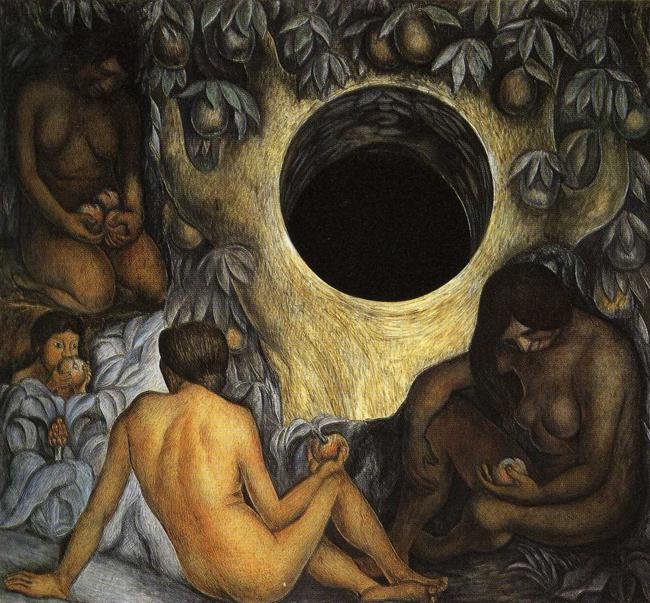Amid the roar of steel and smoke, there stands a fresco—an ancient hymn painted in pigment and plaster. It is 1926, and Diego Rivera takes brush to wall, not to praise dominance, but to witness abundance.
In the image, fruits weigh heavy on outstretched hands. Bodies entwined with soil and leaf. The earth is not a resource. It is a mother, a womb, a body breathing.
Bare limbs sink into fertile ground. Women, men—naked, not for shame, but for truth. Rivers of green around them. Trees arch like arms, sheltering, feeding.
There is labor here, not as an afterthought, but as the pulse of life: hands pulling roots, carrying baskets heavy with harvest. There is celebration in simple gestures: reaching, giving, gathering.
There are no machines in this world—no engines, no smog—only the swirl of availability. Earth in plenty. Earth in hunger fed. Earth in sweat and in joy.
Rivera doesn’t romanticize. He doesn’t gloss over wounds. We see scars on the earth: bare patches, open hollows. But mostly we see what is possible: the tenderness between earth and human, the promise of fruit where soil receives seed.
For Earth Day, the fresco speaks across time. It calls to restoration, to remembering this abundance is not infinite. It is fragile. It depends on hands that soil, on hearts that protect, on voices that remember what the world can be.
